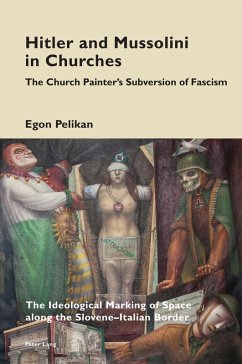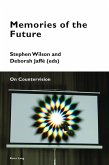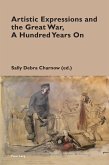When Europe fell prey to totalitarian regimes in the twentieth century, the Slovene artist Tone Kralj responded to the cruellest oppression by systematically depicting his own and his community's resistance against Fascism and Nazism in public spaces, under the very nose of the regime. As incredible as it may seem, the regime never discovered and punished his rebellious actions. The painter embedded his ideological subversion of Fascism and Nazism in wall paintings in more than fifty Catholic churches along the Slovene-Italian ethnic border, thus disseminating his subversive message among the people with whom he shared the same cultural memory. With many of them covering a surface area of several square metres, the church paintings introduced Hitler and Mussolini into Biblical visual narratives, portraying the two dictators with irony and grotesqueness as villainous Biblical characters, often in the role of hangmen, murderers or clowns. The symbols of their regimes were incorporated into Biblical scenes depicting eschatological dimensions of the struggle between good and evil, thus spreading - in the time of the most brutal fascistization - the painter's firm belief in the historical downfall of the Fascist and Nazi regimes.
Dieser Download kann aus rechtlichen Gründen nur mit Rechnungsadresse in A, D ausgeliefert werden.
«Whether casting Mussolini as Pontius Pilate or as Nero or depicting a bleeding sheep to represent the Slovene nation during the war or placing two Fascists in the crowd watching St Vitus being thrown to hungry lions, the anti-Fascist Kralj showed how art can be powerfully subversive. Egon Pelikan has produced an exciting book on an important chapter in anti-fascist history. Highly recommended.» (Sabrina P. Ramet, Author of Alternatives to Democracy in Twentieth-Century Europe: Collectivist Visions of Modernity (2019))
«Rarely are we confronted with such commanding visual assertions of identity as we are in the public works of the artist Tone Kralj. Egon Pelikan's authoritative analysis of Kralj's wall paintings, found in churches that dot the countryside in the Slovene/Italian borderland Primorska, reveals a deeply humane view of a disturbing world. As Pelikan shows, their iconography lends the local space powerful alternative meanings that consistently subvert the efforts of the region's varied twentieth-century rulers to transform it.» (Pieter M. Judson, European University Institute, Florence)
«Rarely are we confronted with such commanding visual assertions of identity as we are in the public works of the artist Tone Kralj. Egon Pelikan's authoritative analysis of Kralj's wall paintings, found in churches that dot the countryside in the Slovene/Italian borderland Primorska, reveals a deeply humane view of a disturbing world. As Pelikan shows, their iconography lends the local space powerful alternative meanings that consistently subvert the efforts of the region's varied twentieth-century rulers to transform it.» (Pieter M. Judson, European University Institute, Florence)









